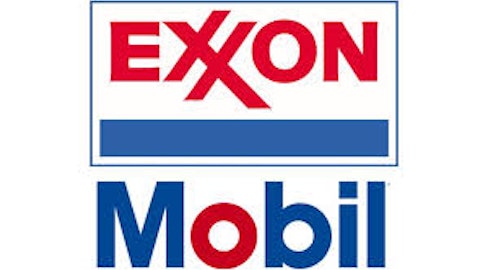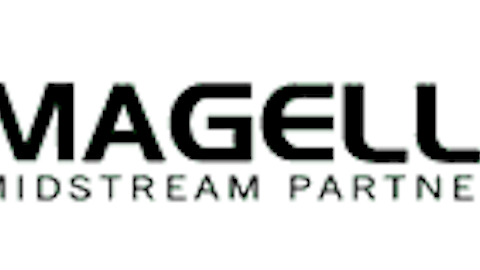U.S. refiners were among the biggest winners last year, with many of the country’s largest independent refining and marketing firms posting share-price gains in excess of 50%. The solid performance has attracted scores of investors, many of whom are wondering if such gains can be replicated this year. To figure that out, let’s take a closer look at three key factors driving profitability among U.S.-based refiners.
1. Cheap American oil
For the better part of the past two decades, U.S. crude oil production was thought to be in secular decline. From almost 9 million barrels per day in 1985, domestic production slipped to just 5 million barrels per day in 2008. But then something happened, which changed all that in a hurry.

Shale drilling turned out to be quite successful, with some plays putting up astounding initial production rates. From its 2008 low of 5 million barrels per day, U.S. production saw a steady uptrend, reaching nearly 5.7 million barrels per day in 2011. Going forward, the trend is likely to continue, with tight oil and other unconventional sources accounting for a larger share of total domestic production.
As production has ramped up, the price of West Texas Intermediate, or WTI — the American benchmark — has edged lower. WTI currently trades at roughly $20 per barrel less than Brent, the global crude oil benchmark. This has provided American refiners with a massive competitive advantage over their foreign counterparts, as well as over their peers on the East Coast.
For instance, Valero Energy Corporation (NYSE:VLO) recently terminated all imports of foreign crude to its Memphis and Gulf Coast refineries, instead opting for cheap crude flowing from the Eagle Ford shale and Canada. Tesoro Corporation (NYSE:TSO) , another large independent refiner, has two refineries in the mid-continent — one in Utah and one in North Dakota — that continue to benefit from their access to cheap crude feedstocks.
And Marathon Petroleum Corp (NYSE:MPC) is looking for even cheaper oil and has its eyes set on a heavy crude from north of the border. The company’s Detroit refinery, which recently upped its capacity, is seeking to capitalize on rising volumes of dirt cheap heavy crude — currently trading at a staggering $30 discount to WTI — from Canada’s oil sands.
2. Strong demand for refined product
At first glance, the demand side of the refining equation appears to pose a challenge. For one, U.S. demand for gasoline peaked in 2005 and has since been in general decline. Looking ahead, more stringent standards on vehicle fuel efficiency and biofuel blending are poised to take effect, which, combined with changes in the age and driving practices of American drivers, suggest that flat or declining domestic gasoline demand is here to stay.
Luckily, however, we live in a highly globalized word. While domestic demand for gasoline has been falling for the past seven years, international demand has been quite strong. Since 2006, U.S. exports of refined petroleum products have soared more than 120%, fueled by strong demand from Mexico, Canada, and the Netherlands last year. This even allowed the U.S. to become a net exporter of fuel last year for the first time since 1949.
Refining executives continue to be optimistic about foreign markets. According to Anthony Rouse, chief economist at Phillips 66 (NYSE:PSX), “Exports are where the growth is.” Not surprisingly, the spun-off refining company plans to increase its U.S. export capacity by 40% by the end of this year.
Going forward, one of the most important export markets is likely to be Latin America, where demand for refined product has increased from roughly 7 million barrels per day at the turn of the millennium to more than 8.5 million barrels per day in 2011. Within the next decade, experts project Latin American demand to rise to nearly 10 million barrels per day.
3. Cheap natural gas
Low prices for natural gas have also proved a major boon to refineries, as well as for U.S. manufacturing companies. Natural gas, one of the main power sources used by refineries, has seen its price plunge over the past few years, dipping as low as $2 per mcf in early 2012.
Since the largest component of a refiner’s variable operating costs is fuel, cheap natural gas has allowed refineries to realize massive cost savings. For instance, falling prices since 2008 have amounted to savings of $1 billion annually for San Antonio-based Valero.
Final thoughts
To summarize, last year’s solid performance among U.S. refiners was driven primarily by the high WTI-Brent differential, high demand for refined product exports, relatively low energy costs, and a decline in capital spending. Going forward, these trends should continue for at least the next couple of quarters.
This should allow many of the larger refiners, which are generating high amounts of free cash flow, to continue returning cash to shareholders, who are enjoying the trend of dividend increases and share buybacks. HollyFrontier Corp (NYSE:HFC) was especially kind to its shareholders last year, declaring a $0.50-per-share special dividend back in November.
However, despite a favorable backdrop, a repeat of last year’s colossal share-price gains is unlikely. With many refining stocks flirting with their 52-week highs, I would be especially cautious about buying into some of these companies at current price levels.
Refining margins have displayed tremendous volatility over the years, so the price at which one buys is crucially important. With that said, I still think some refiners, especially HollyFrontier, Marathon Petroleum, and Tesoro, have more room to run and could see significant gains over the course of this year. Caveat emptor.
The article 3 Factors Driving Refiners’ Strong Performance originally appeared on Fool.com and is written by Arjun Sreekumar.
Fool contributor Arjun Sreekumar and The Motley Fool have no position in any of the stocks mentioned.
Copyright © 1995 – 2013 The Motley Fool, LLC. All rights reserved. The Motley Fool has a disclosure policy.




